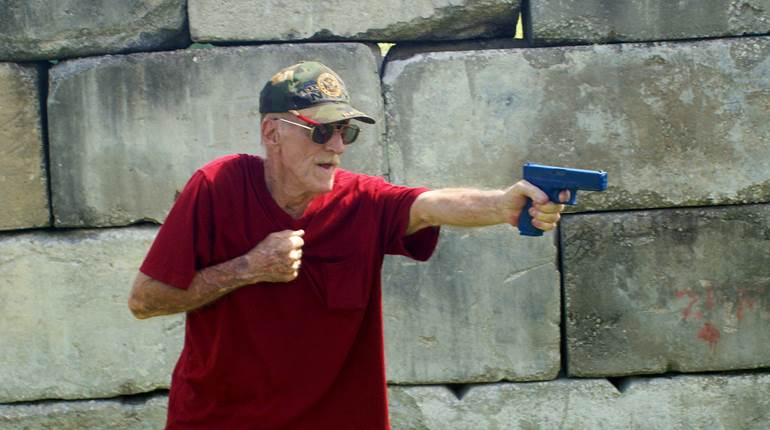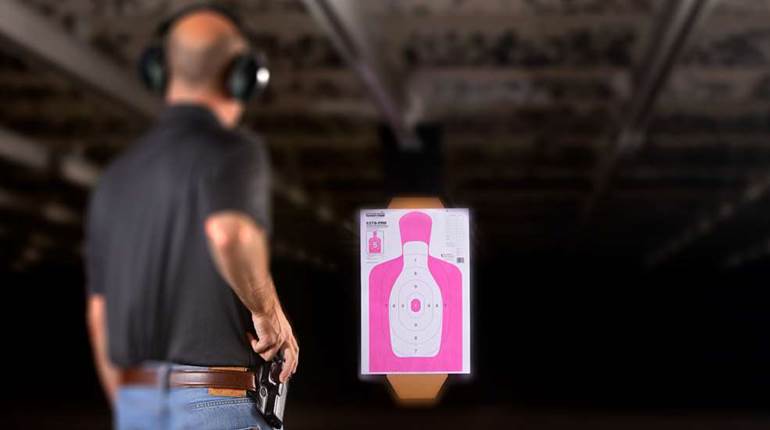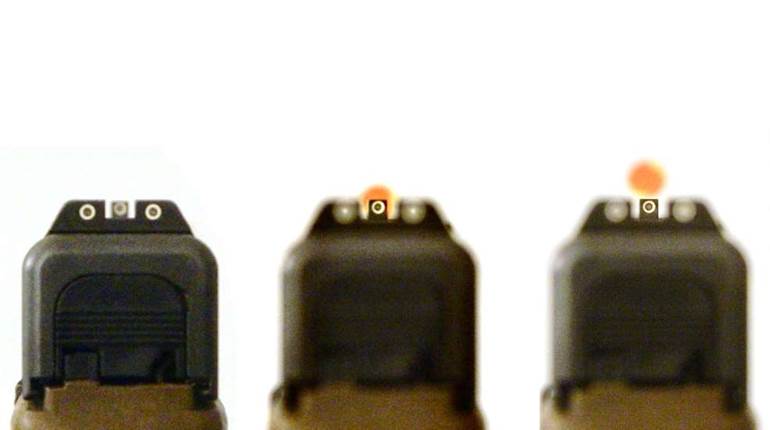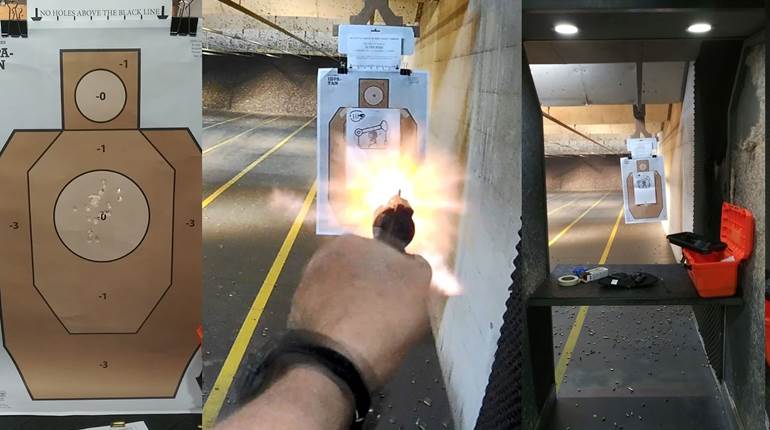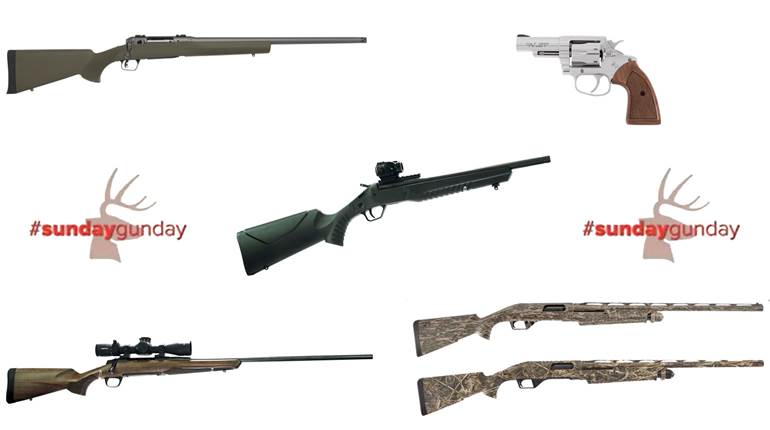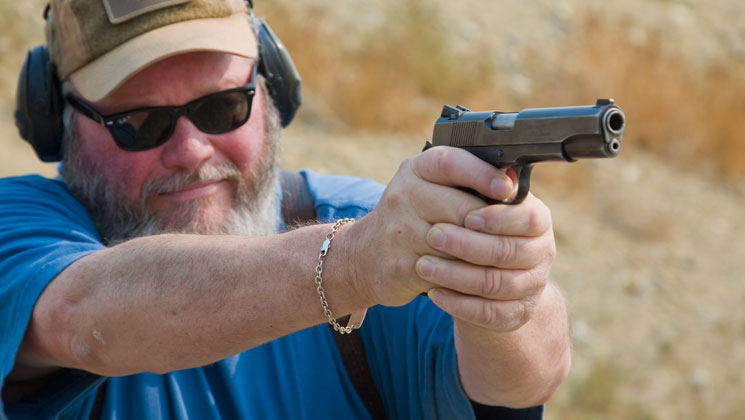
It doesn’t take much time of effort to find an Internet commando waxing on how fast he can “double tap” his pistol or rifle. Like a lot of terms, “double tap” is often used with flippancy and no regard as to its true meaning. As it is with most things, there is little that is new under the sun, and double tap—the term and the practice—has been around longer than most of us are aware. The term is usually credited to William Ewart Fairbairn and Eric A. Sykes, British soldiers and police officials in Shanghai—circa the 1930s—who also were devout students of effective fighting techniques that included hand-to-hand, edged-weapon, as well as the handgun. These men coined the term double tap to describe firing two shots from a handgun with one sight picture as a method to ensure stopping a threat when forced to use the full-metal-jacketed bullets deemed solely appropriate by the Hague Convention.
Even the venerable Jeff Cooper employed the term for a short time. In short order, the always erudite and precise Cooper separated and renamed the practice. Double Tap evolved into “hammer” and was reserved for very short—often referred to as “halitosis”—range. “Controlled pair”—the firing of two separately aimed shots as quickly as possible—became the norm for training. The technique to accomplish the controlled pair was deemed by the good Colonel as the “compressed surprise break.”
Mastering and retaining the compressed surprise break is a critical skill with a self-defense firearm. It can present a real difficulty in some because they cannot seem to grasp the notion that time is of the essence. When they do realize that speed is critical, they often shun all their previous training and simply keep jerking the trigger until the desired result occurs or, sadly, if in a fight they become incapacitated. To learn the compressed surprise break, it’s best to disassemble it into two primary components—the squeeze and combining it with sight picture.
This requires—wait for it—dry-fire practice. Some love dry-fire practice and can’t get enough of it; others would rather be whipped on a town square tied to a wagon wheel rather than dry fire, but dry-fire practice is a key factor in developing the skills needed to become a competent shot.
With an empty gun in a safe place, cock your pistol or retract the slide to load the striker mechanism. Some pistols require a magazine to be in the gun to dry fire, if this be your case make sure the magazine is empty. Now, simply hold the pistol with the muzzle in a safe direction and begin slowly squeezing the trigger. If you have a timer or stopwatch, initiate it. If not, begin counting, “Thousand one, thousand two...” and so forth until the trigger breaks. Repeat until you have a fairly consistent time, say seven seconds or so. Now try to squeeze the trigger and get it to break within five seconds. Make every effort to hold the pistol still while you squeeze and count. As you become consistent with one time, shorten it a second or two until you can consistently break the trigger within two seconds and keep the gun steady.
Once you are comfortable with a surprise break within a couple of seconds, introduce holding the pistol on a target and accomplishing the same objective. Intersperse this dry-fire practice with your regular range regime. You’ll be surprised at how fast and accurate you can become in a relatively short time frame. At some point you’ll start introducing a second shot to the picture. The second shot will usually mean using live ammo at the range, unless you are learning a revolver. Your group should never be more than 4" across. When the group starts getting larger, slow down a bit until you can place all of your shots within 4" at a given range. If your groups start crowding 2", speed it up a little. Eventually you will come to a point of competency where you will introduce the draw to the scenario.
The secret to becoming fast is being smooth. Start slowly and speed it up only when you are accurate and comfortable at a particular distance. Being smooth means eliminating any motion not necessary to the accomplishment of the task. If you find yourself jerking the gun from one position to the next, you are probably trying to outrun your gun. That’s a sure way to have bullets going to or toward places you really don’t want them to go.
Plan on incorporating the exercises into your shooting regimen. They are a good way to keep track of your progress as a shooter, as well as monitoring and warning you of potential problems that occasionally will creep into your shooting.












